KCT tightens its contacts with the International Special Operation Forces community. An exercise like Low Lands has a history. It’s the result of an idea from several NATO countries that owned Long Range Reconnaissance Patrol (LRRP) units. They decided during the late Sixties, to organise in turns once every two year an international LRRP exercise, these were for example: in France / Eugenie, Germany / Schinderhannes, Belgium / Pegasus, Denmark / Viking and in the UK / Tristar. During the Nineties, many of these NATO armed forces have implemented restructuring initiatives or are currently underway and in a final stage, to leverage high technology for a downsized, but more flexible and sustainable force. Due to these reasons, contacts and relations between the international Special Forces (SF) community and the Korps Commandotroepen (KCT, which is the Dutch acronym for its Special Forces Corps) was faded away. Meanwhile, to re-install these faded contacts and relations, the Dutch KCT decided to organize and host in the 58th year of its existence the international SF exercise Low Lands 2000, which took place from the 2nd till the 13th of October 2000 in the Netherlands and in Belgium.
Primary aim of this exercise was to train and practise the detailed preparations and execution of Special Operation (SO) missions, meanwhile tighten the contacts with similar international SF units, and exchanging technical and tactical skills. Twenty one (21) SF teams from various countries like the US, Denmark, Germany, Belgium, France, Spain, and of course host the Netherlands participated in this exercise. During the initial preparation phase of the whole exercise, SF units from each country were asked to express their wishes and needs in regards of target, mission and preparatory training profiles. These wishes resulted in a challenging mission for the S3 Operation section of the KCT, to develop and produce 21 different, and real time today’s “real could happen” scenario’s and mission syllabi. All these teams were inserted during the course of the exercise at nightfall, so most participants wear night vision equipment. After they received their mission briefings and went into isolation phase, to prepare their detailed multiple contingency plans on how to conduct the mission. One Danish, one German and several Dutch teams were inserted by using the High Altitude Low Opening (HALO) parachuting technique out of a C-130H aircraft. The second Danish and German, Belgium, several Dutch and the US SEAL teams, were inserted by the Dutch inland waterways, using boats, kayak canoes, SEAL patrol boats and combat scuba equipment. While the rest of the remainder teams were inserted by the use of various types of helicopters. OPFOR during the conducted missions consisted out of a Reconnaissance troop of 17 Armoured Infantry Battalion, 2 troops of National Reserves (NATRES), dog teams of the Dutch Dog brigade and 1 helicopter of the Dutch police with thermal-image equipment. All elements of Special Operation missions were practised and conducted during this exercise, ranging from Strategic/Special Reconnaissance (area search), Direct Action (sabotage, demolition), Collatoral Activities (Combat Search and Rescue (CSAR) and Close Air Support (CAS) by Deep Forward Air Control (FAC)[‘Deep FAC’ is currently under development by the KCT]. Primary targets were among others: a mobile communication relay-station, the Shell oil refinery at Moerdijk (NL) to sabotage the facility (and simultaneously to start a disaster exercise of the facilities fire department), a mud-barge “De Brabant”, a mobile and a fixed SAM-site of Hawk/Patriot SA-missiles in different locations, several bridges (sabotage and preventing of being destroyed by the enemy), gas relay-stations, an electricity supply facility, and some fixed artillery positions at Fortress “Eben Emael” in Belgium (the classic example of an offensive SF operation conducted by the Germans in WWII) [a not very usual detail about the Dutch team that conducted the raid at Fortress “Eben Emael” on the night of the 5th of October, was that the Commander of the KCT Colonel O.P. van Wiggen was included in the team as the FN MAG 7.62mm machinegun operator (just one day prior to his birthday!), while also the CO of 104 Commando Coy, Major Jellema was included in this team, usually for real this would never happen!].
During the first couple of days, each and every team were able to practise live firing of its own long range sniper rifles [firing out of a multiple store’s building], other organic assault rifles, machine guns, and pistols in the 5.56, 7.62 and 9 mm calibre range. Even the live firing of the 40 mm grenade launcher and LAW heat Anti-Tank weapon was practised at the Dutch Infantry Live Firing Range. While asymmetric threats, and future conflicts increasingly will centre on urban environments. There’s a good chance SF will find itself committed to conduct SO missions in an urban environment, whether it’s skyscrapers, a slum or urban sprawl. While since the end of the Cold War, armed forces have increasingly been called upon to deploy in urban theatres, in conflict and peace support scenarios. This means that in the future, SF units could find themselves engaged in buildings, on the streets, and in subways or sewers, simultaneously. While conducting special operations in urban terrain (SOUT) is complex, combatants must deal with a wide range of environments and infrastructures, as well as civilian populations. As a result, fighting in built-up areas (FIBUA) experience is an essential ingredient of a soldier’s training. Therefore time was spend at ‘Oostdorp’, the Dutch FIBUA training area, where all teams practised their various techniques and skills, in close quarter battle (CQB), while teams practised with live ammunition clearing and securing procedures of buildings, and breeching procedures with demolition and simulation kits. Even the medics of each team practised their medical procedures in an urban environment. For all the foreign teams there was a unique opportunity to obtain the Dutch Certificate-A parachute wing. To qualify for this Certificate-A, each member would have to make four automatic opening (AO) jumps with by the Dutch provided AO canopies, out of a RNLAF F-60 transport/utility aircraft from 334 Sqdn. The final result was that each foreign participant graduated and received their well-earned Dutch parachute wing, during the “wing-parade” on the evening of the 12th. A key topic for most teams during the first days, were helicopter troop drills and procedures, in mounting and dismounting of troops, safety and emergency procedures, caused by the use of various types of helicopters like RNLAF CH-47D’s and GAF UH-1D’s and CH-53G’s. Communication procedures, while the vast communication density characterizes an SF operation, were also practiced frequent. Besides HQ communications, information needs to be exchanged with pre-deployed SF teams, fixed wing aircraft and helicopters, during insertion by aerial, land and water transport, landing and follow-up operations. Also the ability to operate round?the?clock missions and collateral activities, increasingly call for interaction with the diverse joint and multinational forces, with a corresponding need to acquire and transfer large amounts of information reliably, securely, and in real-time. In each mission, means of communication, plays an important and vital role in its success, without it it’s almost impossible.
Short description of the various SF teams, their capabilities, armament and equipment: Denmark’s Jaegerkorpset forwarded two teams of 13 men each, this unit is an elite Ranger element within the Danish Army, and handles all Counter-Terrorist (CT) duties within Denmark. It’s known that Jaegerkorpset operators deploy with the MP-5SD, MP-53 (5.56mm version of the MP-5, primarily the suppressed versions), H&K G41 rifle, H&K 13E machinegun, Neuhausen Pistol, while their snipers are equipped with the HK PSG-1 a 7.62 mm sniper rifle. They’re known to parachute from either CH-47 helicopters or C-130 cargo aircraft. On target deliveries are performed by helicopters, and Jaegerkorpset operators are reputed to be able to supply near bulls-eyes on moving targets from these helicopters. Their unit strength is approx. 80 men and is based at Aalborg Air Base. All members are skilled in patrolling, demolitions, parachuting, climbing, combat swimming and it’s known that they work very close with the British SAS.
The German Army forwarded two teams of 8 men each, from the Kommando Spezialkraefte (KSK), which is a new in 1994 formed Special Forces group. The bulk of this unit was formed on 1 April 1996 (giving it the nick name “the Jokers”, referring to 1st of April “Jokers day”) when the commando company of each of the three Airborne Brigades was taken, and along with two of the Long Range Reconnaissance Coy’s were combined under one command, forming the KSK. The unit plans to be fully operational by the end of year 2000, and at that time having 1,000 operators fully trained and slotted. Basic missions of the KSK include SA, deep penetration raids, and the more common specops HRT, and CT ops. All KSK operators are HALO/HAHO parachute qualified and combat scuba trained. Apart from standard German infantry equipment, the KSK also has an array of special equipment. Here’s a short run-down: webbing by Eagle inc. of the USA, Gerber mark II knives, the classic black counter-terrorist overall, H&Ks new G36 carbine along with the USP, called the P8 in German service, the MP-5SD5 sub-machine gun, G22 Sniper Weapon System (which is a version of Accuracy Internationals sniper rifle L96, modified with a folding stock, new German sight and chambered for .300 Winchester Magnum), the under-water pistol P II, and the machineguns HK21 LMG (5.56mm), HK 23 LMG (7.62X51mm), Panzerfaust 3 and Milan A.T. Weapons, HK23 and MG3 along with a complete range of eastern bloc weapons.
The Belgium 14th Para-Commando Engineer Coy forwarded two teams of each 5 men. This squad of combat divers are fully qualified Para-Commando and wear the Green Beret. These combat divers or “Frogmen” primary mission is to prepare amphibious landings and river crossings and are equipped with a wide variety of special engineer equipment to fulfill its missions. Besides their normal diving equipment, these Frogmen have inflatable ZODIAC Mk VI HD boats, driven by two 70 HP outboard engines, capable to transport 15 fully equipped Para-Commandos, Kayaks, and SILLINGER boats with a 40 HP outboard engine. In classic operations, they support the Para-Commando Brigade or the Multinational Division-Central (Airmobile) in mobility support, such as: clearance and preparation of helicopter landing sites, mine clearance, explosive ordnance disposal, and route opening and maintenance. While counter mobility, is assured through: construction of terrain and situation oriented obstacles like minefields, route denials, and demolitions. Their unit’s motto is “VIA VI” meaning Making its way through force.
The French Army forwarded two teams of 10 men each, from the 1er Regiment de Parachutistes d’Infanterie de Marine (‘Marsouins’ or “black beret”), based in Bayonne. This unit is the French Army’s primary special operations unit [while their name states they are Marine Infantry, they are in fact Army and have no amphibious training]. The Regiment operates in a manner similar to the US Army’s Special Forces, or British SAS. It’s tasked with conducting three primary types of missions: special instruction/assistance (Foreign Internal Defense); direct action [specialty: assault in the strong point defense of enemy troops, hard skirmishes, sabotage (high value target)], intelligence gathering. It’s also capable of conducting counter terrorist operations. The main weapon used by the unit is the FAMAS 5.56 assault rifle. For CQB the MP-5 series (especially the MP-5SD) is used as the main weapons. The Beretta 9mm is the standard sidearm carried by the soldiers. The ARWEN 37 mm grenade launcher is used in CQB work to launch CS gas into buildings. The Remington 12 gauge pump shotgun is also used during CQB, to take down doors. They wear standard French camouflage and webbing, except when doing CT/HR/CQB work. CQB kit includes a black balaclava, black nomex coveralls, non-slip boots, special webbing and holsters, medical kit (for teams medics), gas masks, and special communications equipment. All members wear the traditional red beret of Airborne Forces. The unit is believed to have about 300 men assigned to it.
The US Army forwarded one A-Team of 12 men from B-Coy 1/10 Special Forces group, based in Germany. The A detachment consists of one Captain (Commander), one Warrant Officer (Detachment Technician), one Master Sergeant (Operations Sergeant), one Sergeant First Class (Assistant Operations Sergeant), two Weapons Sergeants, two Engineer Sergeants, two Medical Sergeants, and two Communications Sergeants. Their primary mission and capabilities are: Plan and conduct SF (even unilateral) operations separately or as part of a larger force, infiltrate and exfiltration specified operational areas by air, land, or sea, and conduct SF operations in remote areas and hostile environments for extended periods of time with a minimum of external direction and support. Primary choice of armament are among others the M4A1, which can be equipped with many special features such as an: 4x day scope which allows soldiers to judge range and then fire more accurately beyond 300 meters; the M68 sight for close quarters combat (the M68 sight is a reflex non-telescopic sight, It uses a red collimated dot aiming reference and is designated for the “two eyes open” method of sighting [the shooter can keep both eyes open while using this accessory, allowing more rapid engagements]; infrared pointer/illuminator, used at night and can only be seen with night vision goggles; an visible light, this is a high intensity rail mounted flashlight and is best used in buildings [the light works well with the visible laser by illuminating then pinpointing a target, and the visible light is used mainly to discern friend and enemy in close fighting]; Trijicon 4×32 day optic and AN/PEQ-2; forward hand grip, which helps stabilize the weapon and helps keep the hand away from the hand guards and barrel, which become hot during use; sound suppressor, which significantly reduces noise and flash, making it more difficult to discern the direction of fire [to accommodate these accessories, Rail Interface Systems (RIS), which are basically a series of rigid grooved rails, replaced the normal hand guards, and all accessories, except for the sound suppressor, are designed to fit the RIS]. The M4A1 can also make use of the M203A1 grenade launcher, which is a single-shot weapon and fires a 40mm grenade. The M9 multipurpose bayonet system is used as a bayonet on the M4A1, as a hand weapon, as a general field and utility knife as well as a wire cutter together with its scabbard, and as a saw. The second primary weapon in the team is the M249 SPW, which is a special developed lightweight variant of the M249model: a new lightweight barrel was developed and the carrying handle, the magazine well and the mount lugs (for vehicle applications) have been removed [unique to the M249 SPW are special rails to accommodate scopes, laser designators and flashlights; a pistol grip and a detachable bipod]. The team also carries LAW 66 mm HEAT Anti-Tank and M40A3 Sniper weapons with them.
The US Naval Special Warfare Unit 2 (SEALS) forwarded a detachment of 22 men. The US Navy SEALs are America’s premier naval special operations force. SEALs is an acronym for SEa, Air, and Land and highlights the arenas that SEALs can operate in. Whether the US military needs enemy ships destroyed in a fortified harbor or enemy beach defenses softened up, the SEALs are specially trained and outfitted to allow them to patrol inland and coastal waterways and to allow them to insert and extract naval special operations forces from those waters. SEALs can swim or parachute into their area of operations and are proficient at not only underwater ops and demolitions but also reconnaissance and small-unit tactics. Their huge array of specialized weaponry is much similar to what the US Army SF teams carry and is even extended with special weaponry depending on the type of mission.
The Spanish Army forwarded two teams (one of 6 men and the second of 18 men) from JACA, the “Fuerza de Maniobra Cuartel General Del Mondo de Operaciones Especiales. This unit from the military mountain and special operations school, is Spain’s primary SF unit, and they’re trained in parachuting, movement and combat in snow, firing and explosives, water combat and infiltration by water and survival, mountain climbing and communication techniques. They have access to special materiel such as skiing, climbing, and underwater swimming-gear and equipment. Their weaponry includes Liama M-82 9 mm pistols, Star Z-70B sub-machineguns, various types of assault rifles (Cetme ‘L’ 5.56 mm and H&K G36), light and medium machine guns (Ameli 5.56 mm and M-60 7.62 mm), Mauser SS-60 7.62 mm Sniper rifle, 60 mm mortars and two types of anti-tank weapons, the C-90C and the 88.9 mm Model 65. The training and equipment of these units allows them to engage in a number of SO, including collaboration with local guerillas; long-range reconnaissance patrols; clandestine attacks on strategic targets, hostage rescue, and airborne pathfinder missions.
Last but certainly not the least, is host the Netherlands, which participate in this exercise with 11 teams of 8 men each, from 104, 105 and 108 Commando Coy’s from the KCT. This Corps is the Dutch primary SF unit, that’s capable to conduct all SOF missions and international CT missions. They’re trained and equipped to be inserted and conduct their mission by land, air, and water. Commandos also employ an extraordinary inventory of sophisticated weapons and technology, such as the 9 mm GLOCK 17 pistol, the Diemaco C8A1 assault rifle with an 4.3x optical Elcan sight attached on it, various kind of hand grenades and non-lethal flash bangs, a Hill combat knife, the MINIMI-Para lightweight 5.56 mm one-man-portable machine gun, the currently still in service FN MAG 7.62mm machine gun, the Accuracy International Arctic Warfare Magnum .308 with a 10×42 sight attached sniper rifle, and a new extended long range rifle the Barrett 82A1 .50 calibre sniper rifle. Also the KCT has acquired a new weapon for CQB actions, it’s the light-weight P-90 [produced by FN Herstal in Belgium] with a great stopping power, penetrating body-armour and a low risk of ricochets and can be equipped with an integrated laser target pointer, a silencer and flashlight.
Having emerged from the Cold War as a uniquely postured military and political tool, SF stand at the threshold of a new millennium, peering into a seething cauldron of global activity. As its venture into an uncertain future, threats to global NATO allies’ interests are developing new dimensions. It’s being increasingly challenged by regional instability, transnational dangers, asymmetric threats and the likelihood of unpredictable events, threats that are not easily addressed by simple force-on-force calculations. To meet these challenges, NATO allies must leverage the best capabilities and potential of its armed forces. This will be a difficult undertaking; it will have to make hard choices to achieve the trade-offs that will bring the best balance, most capability and greatest interoperability for the least cost. NATO’s allies SOF have an important and growing role in addressing many of these challenges, and effectively satisfying the cost-benefit criteria. SOF is rapidly adaptable to a broad and constantly varying range of tasks and conditions. This organizational agility allows SOF to quickly concentrate synergistic effects from widely dispersed locations and assist joint force commanders in achieving decisive results without the need for time-consuming and risky massing of people and equipment. Even under the most austere conditions, SOF can conduct 24-hour, multidimensional operations to penetrate denied or sensitive areas and resolve terrorist activity, pre-empt the threat posed by weapons of mass destruction (WMD), or strike key targets with precision and discrimination. Although a potent military force, SOF can often accomplish their mission without resorting to the use of force. SOF training skills combined with language proficiency, cultural awareness, regional orientation and an understanding of the political context of their missions make SOF unique in the NATO allied military doctrine, as true “warrior-diplomats.” Moreover, this broad array of versatile capabilities allows SOF to “tailor to task” and operate effectively in any situation or environment. The 21st century SOF warrior, selectively recruited and assessed, mature, superbly trained and led, will remain the key to success in special operations. These warriors must be proficient in core competencies, training for certainty while educating for uncertainty. They must be capable of conducting strategic operations in tactical environment, combining a warrior ethos with language proficiency, cultural awareness, political sensitivity and the ability to use Information Age technology. Real-time exercises like Low Lands 2000, were the international SF community will train together, will surely contribute to meet these future challenges.



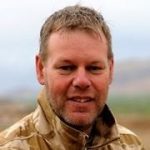
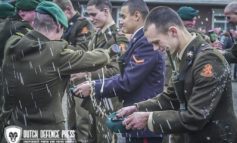
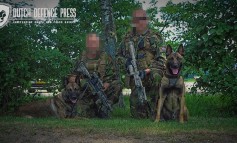
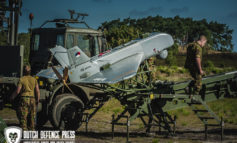
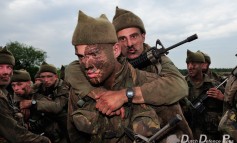
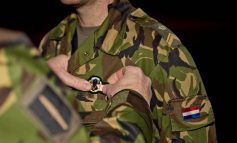
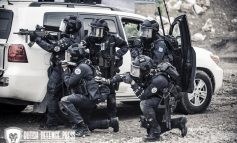



Leave a Reply